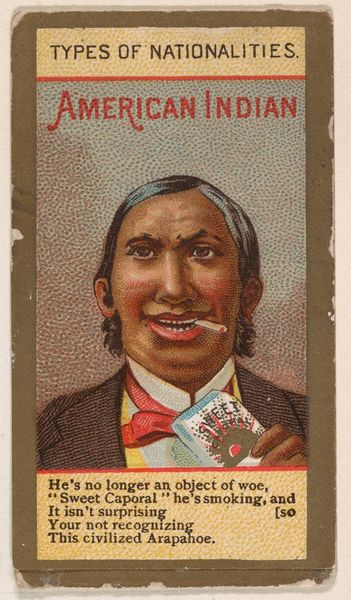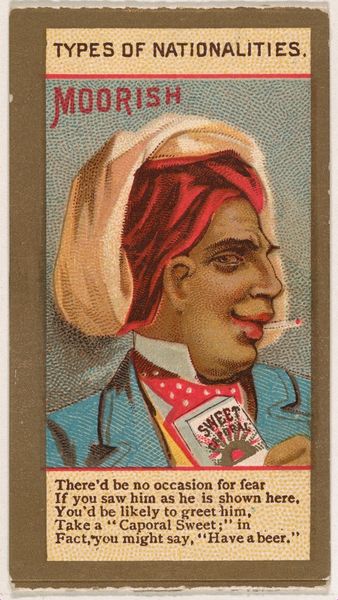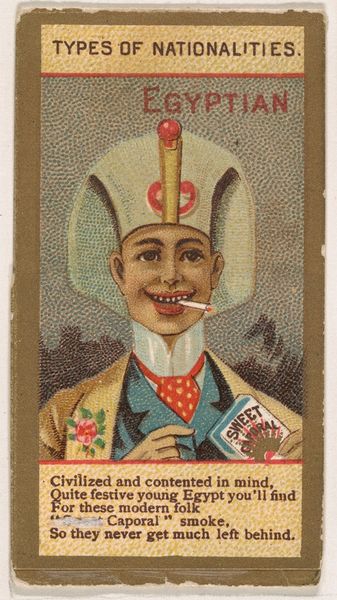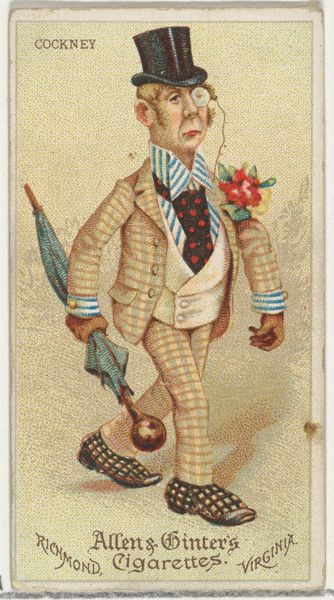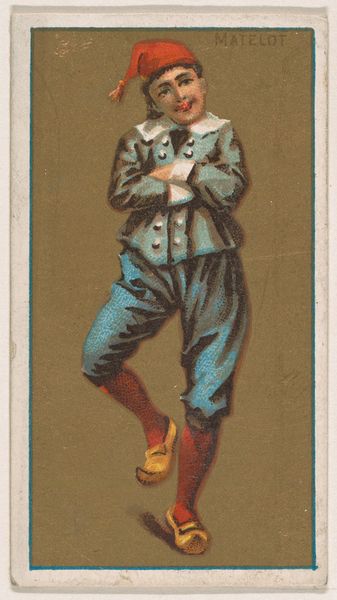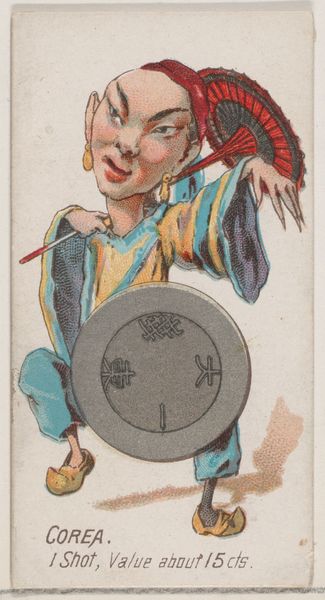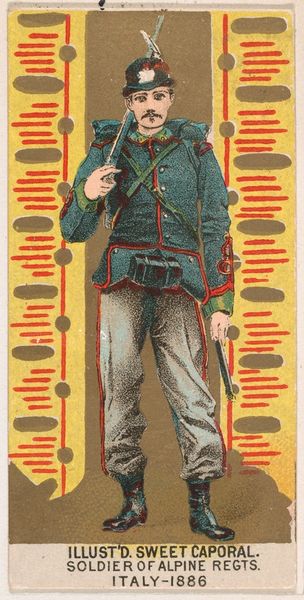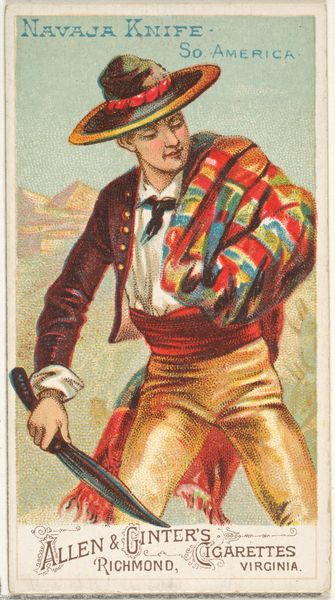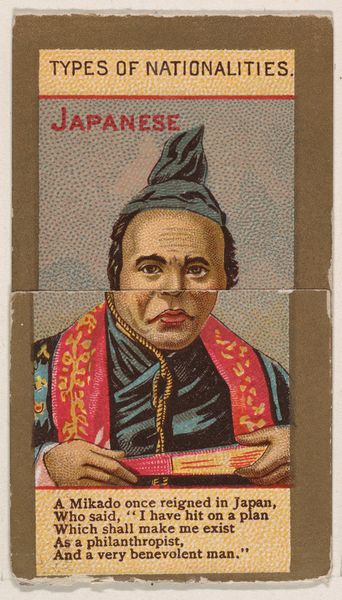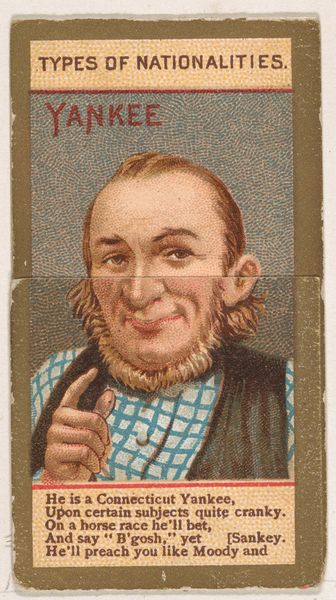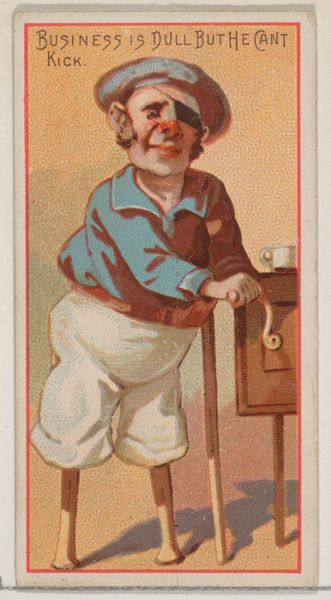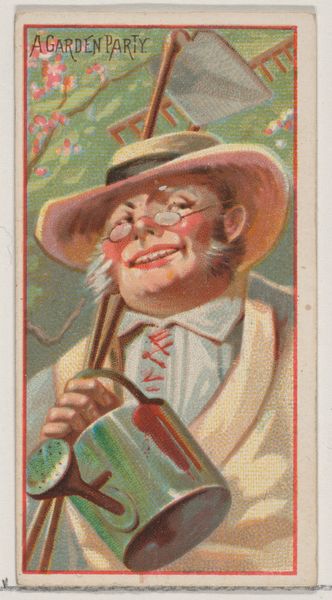
Spanish, from Types of Nationalities (N240) issued by Kinney Bros. 1890
0:00
0:00
drawing, lithograph, print
#
portrait
#
drawing
#
lithograph
# print
#
caricature
#
orientalism
#
19th century
#
genre-painting
Dimensions: Sheet (Folded): 2 11/16 × 1 7/16 in. (6.8 × 3.7 cm) Sheet (Unfolded): 6 7/8 × 1 7/16 in. (17.4 × 3.7 cm)
Copyright: Public Domain
Curator: This lithograph, "Spanish, from Types of Nationalities," produced around 1890 by the Kinney Brothers Tobacco Company, presents quite the caricature. What's your immediate take? Editor: Well, it immediately strikes me as a portrait steeped in the visual language of its time. The subject's apparel seems less an indicator of material reality and more a projection manufactured for early marketing consumption. The whole image appears designed to promote both commodity and concept. Curator: Precisely. Observe the figure’s presentation. We see a gentleman, ostensibly Spanish, rendered with deliberate, almost theatrical flair. His outfit, a mix of what might be construed as traditional elements juxtaposed with a business suit, reads as an intentional pastiche. The intent, as I interpret it, seems to invoke, then exoticize, cultural identity. Editor: Note also the caption beneath the figure. This element functions quite similarly, I think. While appearing folksy, this textual reference acts as a pointed commentary on production: on consumerism in its relationship to perceived ethnic identity, even down to the choice of "Sweet Caporal" tobacco as the literal product. The material itself tells a broader social story. Curator: An intriguing point. How do you see that connection manifesting aesthetically? To me, the flatness of the lithographic print enhances the feeling of distance—an intended barrier, if you will. Editor: Perhaps. I focus on the texture hinted at. While a print, the image presents a sort of crafted appearance, a tangible record of process, each step from sketch to final impression imbued with decisions reflecting not just aesthetic trends, but socio-economic ones, too. Consider, the layers of decisions to present national identity this way. Curator: Fair enough. It underscores the degree to which this image, like many others, functions as a complex semiotic structure. It speaks volumes, deliberately creating tropes by layering symbols: the clothing, the cigarette, the typography... it’s all very self-conscious, wouldn't you agree? Editor: Undoubtedly. This work highlights that historical dialogue in image making and material distribution, showcasing not only aesthetic norms, but the commodification and circulation of culture itself. What better artifact than one meant to be distributed to buyers who purchase this very kind of representation? Curator: An assessment, I think, quite fitting. Thanks for enriching our view. Editor: And thank you, too. A quick glance turns out to reveal quite a story when viewed through even just two specific lenses!
Comments
No comments
Be the first to comment and join the conversation on the ultimate creative platform.
